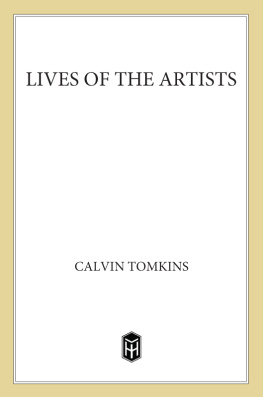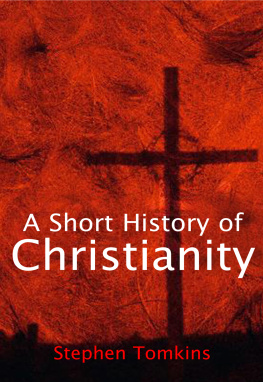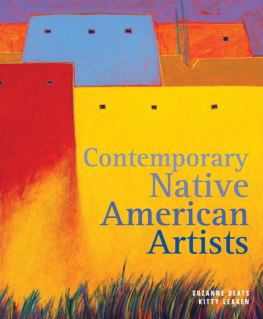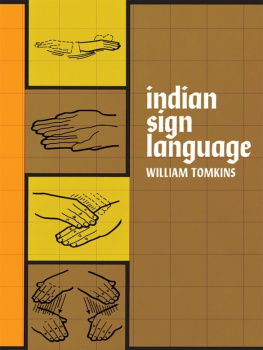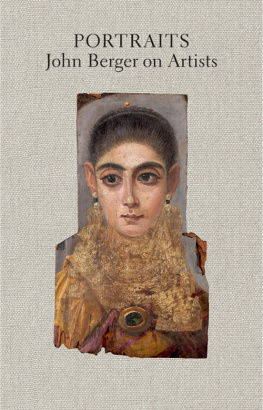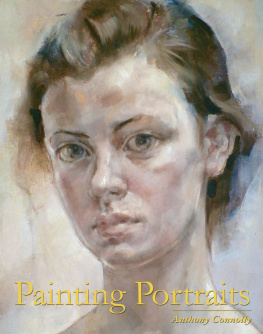Tomkins - 2008;2010;
Here you can read online Tomkins - 2008;2010; full text of the book (entire story) in english for free. Download pdf and epub, get meaning, cover and reviews about this ebook. City: New York, year: 2008;2010;2014, publisher: Henry Holt and Co., genre: Non-fiction. Description of the work, (preface) as well as reviews are available. Best literature library LitArk.com created for fans of good reading and offers a wide selection of genres:
Romance novel
Science fiction
Adventure
Detective
Science
History
Home and family
Prose
Art
Politics
Computer
Non-fiction
Religion
Business
Children
Humor
Choose a favorite category and find really read worthwhile books. Enjoy immersion in the world of imagination, feel the emotions of the characters or learn something new for yourself, make an fascinating discovery.
- Book:2008;2010;
- Author:
- Publisher:Henry Holt and Co.
- Genre:
- Year:2008;2010;2014
- City:New York
- Rating:3 / 5
- Favourites:Add to favourites
- Your mark:
- 60
- 1
- 2
- 3
- 4
- 5
2008;2010;: summary, description and annotation
We offer to read an annotation, description, summary or preface (depends on what the author of the book "2008;2010;" wrote himself). If you haven't found the necessary information about the book — write in the comments, we will try to find it.
2008;2010; — read online for free the complete book (whole text) full work
Below is the text of the book, divided by pages. System saving the place of the last page read, allows you to conveniently read the book "2008;2010;" online for free, without having to search again every time where you left off. Put a bookmark, and you can go to the page where you finished reading at any time.
Font size:
Interval:
Bookmark:

Also by Calvin Tomkins
Duchamp: A Biography
Alex: The Life of Alexander Liberman
(with Dodie Kazanjian)
Post-to-Neo: The Art World of the 1980s
Off the Wall: A Portrait of Robert Rauschenberg
The Scene
Living Well Is the Best Revenge
Merchants and Masterpieces:
The Story of the Metropolitan Museum of Art
Eric Hoffer: An American Odyssey
The World of Marcel Duchamp
The Bride and the Bachelors
Intermission (Novel)
Lives of the Artists

Calvin Tomkins
A JOHN MACRAE BOOK
Henry Holt and Company New York
The author and publisher have provided this e-book to you for your personal use only. You may not make this e-book publicly available in any way. Copyright infringement is against the law. If you believe the copy of this e-book you are reading infringes on the authors copyright, please notify the publisher at: http://us.macmillanusa.com/piracy.
Once again, for Dodie
Making art is both harder and easier than it used to be. The radical changes in art and society that were set in motion during the early years of the twentieth century gave rise to a new kind of artist, whose first obligation was to invent or discover a new self. Tradition, skill, rigorous training, formal knowledge: All the old requirements fell away or became optional. Art, it seemed, could be whatever artists decided it was, and there were no restrictions on the new methods and materialsfrom video and verbal constructs to raw nature and urban detritusthat they could use. The limitless freedom of the modern artist has been an unending burden. If art can be anything, where do you begin?
For the ten contemporary artists discussed in this book, art has been, among other things, an approach to the problem of living. (The profiles were all published in The New Yorker during the last decade, and are reprinted here, with a few minor changes and updatings, as sightings of lives in midstream, open to future developments.) Common denominators are notably absent. Richard Serra, our greatest living sculptor, freely acknowledges his early debt to the work of Jasper Johns, our most extravagantly admired painter, but the two men are so different in temperament, sensibility, and ego management that it would be hard to imagine them having a useful conversation. Jeff Koons and Damien Hirst, the reigning masters of a deliberately outrageous, media-centered art that feeds off the corrupting influences of entertainment, celebrity, and late-capitalist glut, have both, in mid-career, settled into the unlikely roles of devoted husbands and fathers. Conversely, Cindy Sherman shuns the spotlight at all cost, but thrives as a virtuoso performer in a theater of her ever-shifting selves, and Maurizio Cattelan, an escape artist with a taste for anonymity, scours the world for serious jokes that pinpoint our social and philosophical dilemmas.
Julian Schnabels star waxed and waned in sync with the overheated art market of the 1980s; since then he has doubled himself, holding on to his claims as a neo-expressionist painter while forging a second career as an award-winning film director. James Turrell has spent his long career transforming an extinct volcanic crater into an observatory for the phenomenological aspects of light. Matthew Barneys obsessive, myth-haunted films grow out of his sculptures, whose materials have included Vaseline, tapioca, his own body, the Boise football stadium, the Chrysler Building, the Isle of Man, and a great many of his fellow creatures, living and dead. John Currin decided to rejuvenate the art of figurative painting by rediscovering traditional skills that proved to be, in his hands, perfectly viable after all. If these artists have anything in common, it is not apparent in their work.
I once heard a clueless young painter express scorn for a more successful one by saying that he doesnt even know what art is. Does anyone? Marcel Duchamp, the most influential artist of the last hundred years, nailed down this useful enigma in 1913, when he began selecting and signing common, machine-made objects (a bottle-drying rack, a snow shovel), thus converting them into readymade works of art. The readymade, Duchamp said, was a form of denying the possibility of defining art. Some people feel that much of what passes for art these days is just self-indulgence; posterity, that implacable judge, may decide theyre right. In the meanwhile, contemporary art of every description basks in an unprecedented climate of acceptance. An avalanche of money from new and often unexpected sourcesAmerican hedge fund owners, Russian oligarchs, shadowy billionaires in Hong Kong or Shanghai or Abu Dhabihas transformed the art market, and the top contemporary artists now command higher prices at auction than Impressionists or modern masters. The collapse that art professionals have been predicting for years may be inevitable, but the widespread stock market jitters of 2007 did not deter buyers from paying $19 million at auction for one of Damien Hirsts medicine cabinet sculptures, and just under $72 million for Andy Warhols Green Car Crash. The art world, which used to be a community, is now part of the worldwide visual culture industry, which includes film, fashion, television, and advertising, and works overtime to trample down the boundaries that used to keep them separate.
All this makes life more complicated for the artist. The pressure to succeed in the marketplace, to establish a unique artistic brand or style, may clash with the need to accept failure in pursuit of a deeper vision. It takes a strong character to reconcile or ignore these tendencies, and this brings us back to the question of self-invention. Formalist art critics used to say that the life of an artist was irrelevant to an understanding of his or her work. This may be so for certain critics, but ever since 1550, when Giorgio Vasari published the first edition of his Lives of the Most Eminent Architects, Painters, and Sculptors of Italy (the title I shamelessly swipe here), biography has informed our understanding of art. In my experience, the lives of contemporary artists are so integral to what they make that the two cannot be considered in isolation. If the work is interesting, the life probably is too.
Most contemporary art is not very interesting, of course, partly because there is so much of it. Ten thousand artists live in New York. For the ones you never hear about, unlimited freedom often translates into art that is relatively easy to doslacker art, in the current phrase. For the others, making art is still one of the most demanding jobs on earth. Frank Stella, another contemporary master, recommends looking at the contemporary art world as an expanding pyramid. The base gets wider and wider, but theres still not much room at the top.
It took Damien Hirst less than five years to become the most famous living British artist. As early as 1992, The Independent ran a cartoon of Prime Minister John Major submerged horizontally in a glass tank, with an onlooker exclaiming, Oh, God! Its disintegrating! The reference, as the papers readers were expected to know, was to the twenty-seven-year-old Hirsts tiger shark in formaldehyde, a real-life art work acquired the previous year by the advertising magnate Charles Saatchi. In London, Hirst is as well known as the rock stars he hangs out with, but fame has not yet singed him with its dragon breath. Now thirty-four, he is an open, friendly, humorous, quick-witted, dirty-minded, hard-drinking, and immensely likeable Yorkshireman whose tough, working-class features look as though they could turn belligerent at some point but never do.
Font size:
Interval:
Bookmark:
Similar books «2008;2010;»
Look at similar books to 2008;2010;. We have selected literature similar in name and meaning in the hope of providing readers with more options to find new, interesting, not yet read works.
Discussion, reviews of the book 2008;2010; and just readers' own opinions. Leave your comments, write what you think about the work, its meaning or the main characters. Specify what exactly you liked and what you didn't like, and why you think so.

